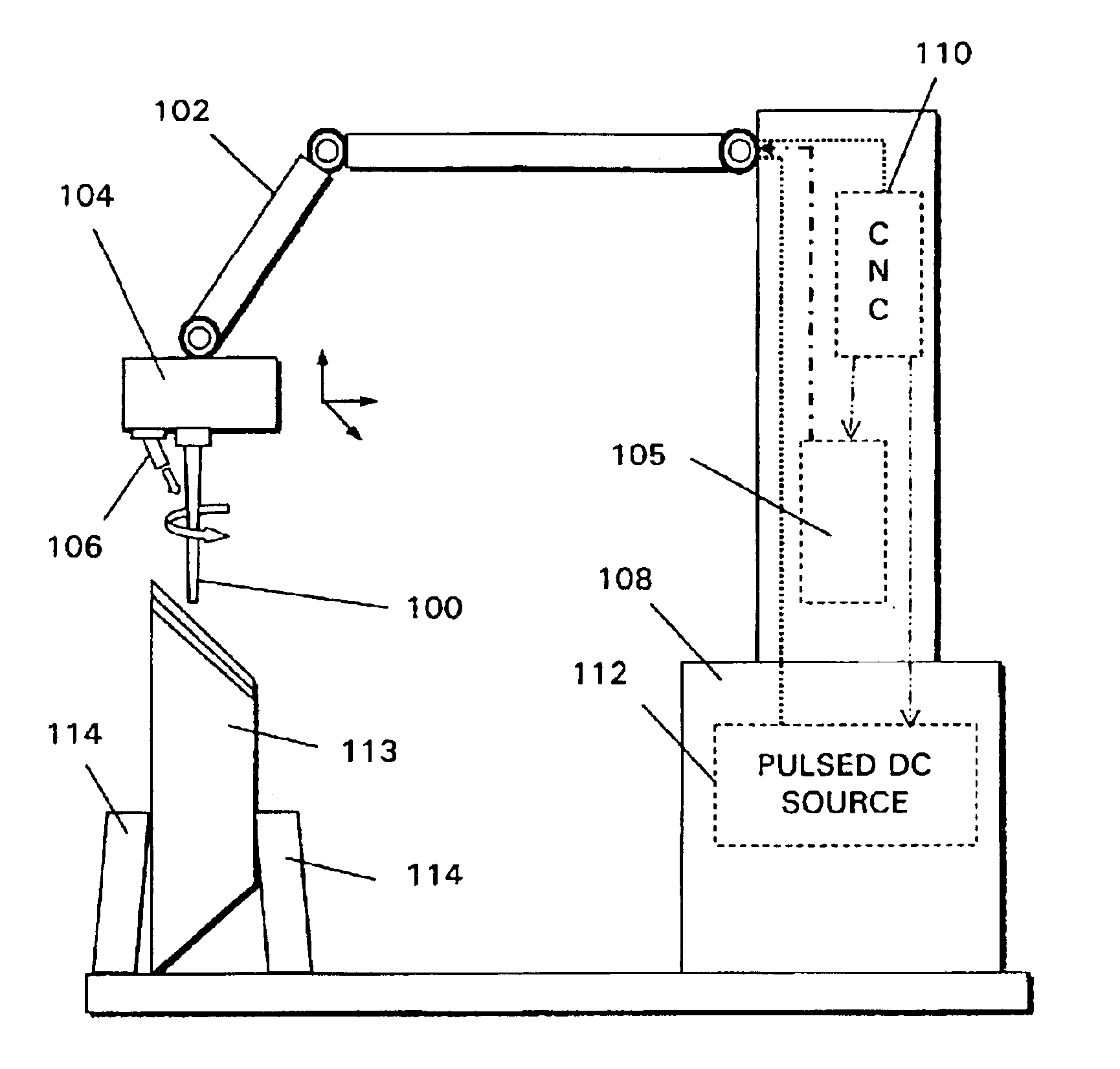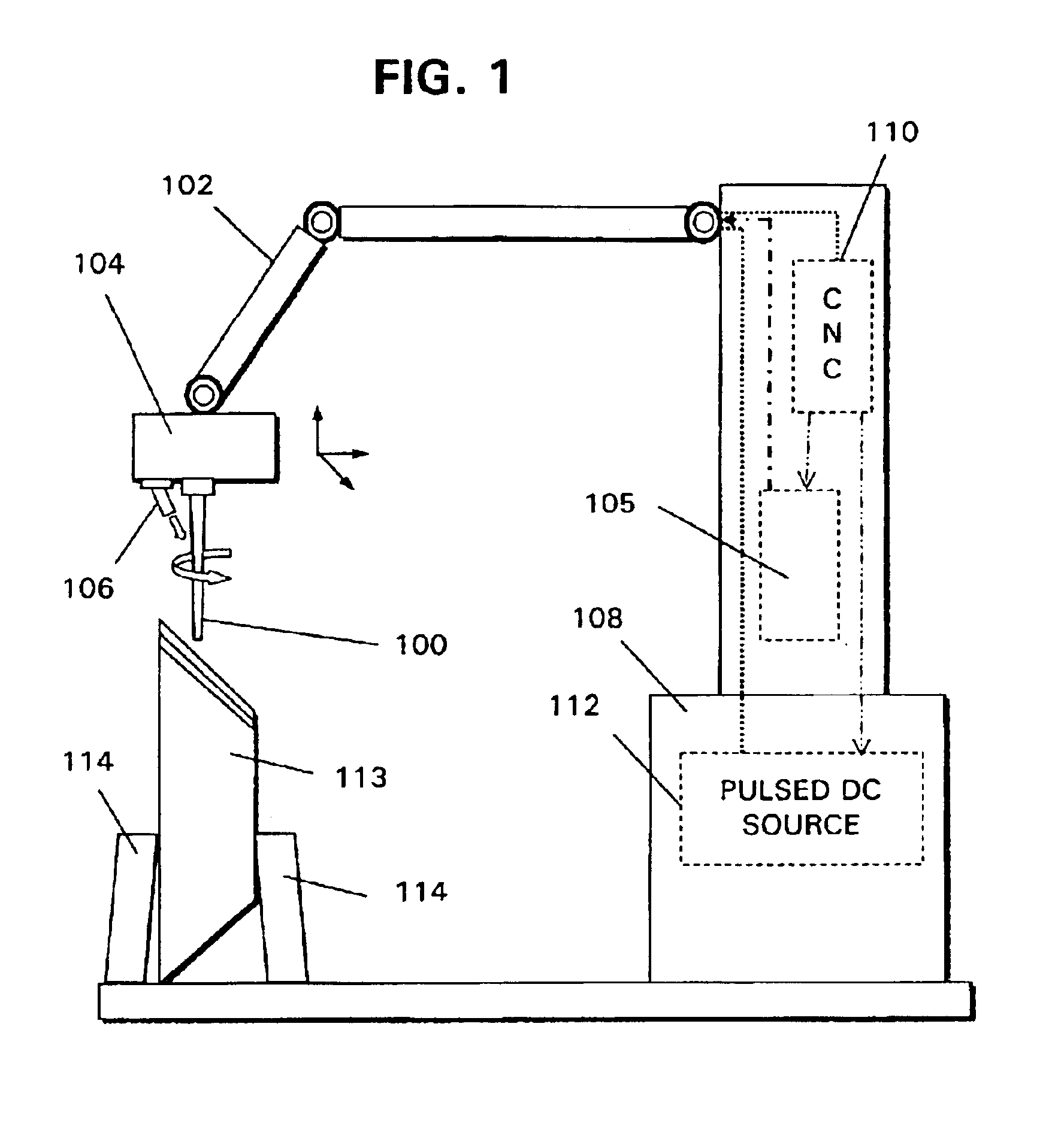Multi-axis numerical control electromachining of bladed disks
a numerical control and electromachining technology, applied in the field of electromachining, can solve the problems of large number of pits or craters, high equipment cost, and long cycle time of milling process, and achieve the effect of high metal erosion
- Summary
- Abstract
- Description
- Claims
- Application Information
AI Technical Summary
Benefits of technology
Problems solved by technology
Method used
Image
Examples
Embodiment Construction
The present invention uses a high rate electroerosion in an electrolyte medium, to remove material and generate the desired shape and geometry.
Since non-mechanical means are used to remove and shape the material, low cost tools made of soft metals or any electrically conductive material can be used to significantly lower tooling costs. The workpiece metal removal rate can be increased by intense electrothermal actions, and no significant “cutting forces” are generated so that simple, low rigidity machines can be used that greatly reduce cost. Further, no compensation is necessary for tooling deflection that is common in mechanical milling.
As a non-mechanical process, the electro-machining speed is independent of workpiece material hardness and toughness. Higher metal removal speed than milling for tough workpiece metals can be achieved through high intensity electrothermal reactions.
With the present invention, it is possible to use soft metals as tool electrodes and the electrodes t...
PUM
| Property | Measurement | Unit |
|---|---|---|
| electrical power | aaaaa | aaaaa |
| feed speed | aaaaa | aaaaa |
| erosion intensity | aaaaa | aaaaa |
Abstract
Description
Claims
Application Information
 Login to View More
Login to View More - R&D
- Intellectual Property
- Life Sciences
- Materials
- Tech Scout
- Unparalleled Data Quality
- Higher Quality Content
- 60% Fewer Hallucinations
Browse by: Latest US Patents, China's latest patents, Technical Efficacy Thesaurus, Application Domain, Technology Topic, Popular Technical Reports.
© 2025 PatSnap. All rights reserved.Legal|Privacy policy|Modern Slavery Act Transparency Statement|Sitemap|About US| Contact US: help@patsnap.com


